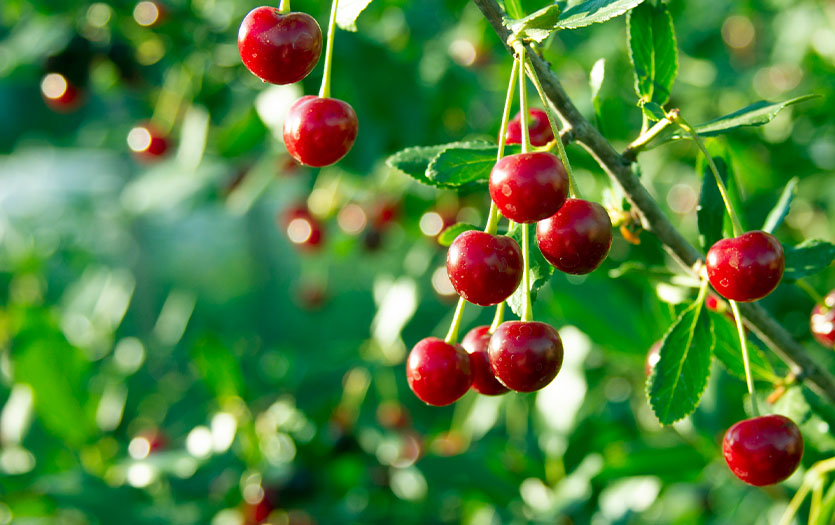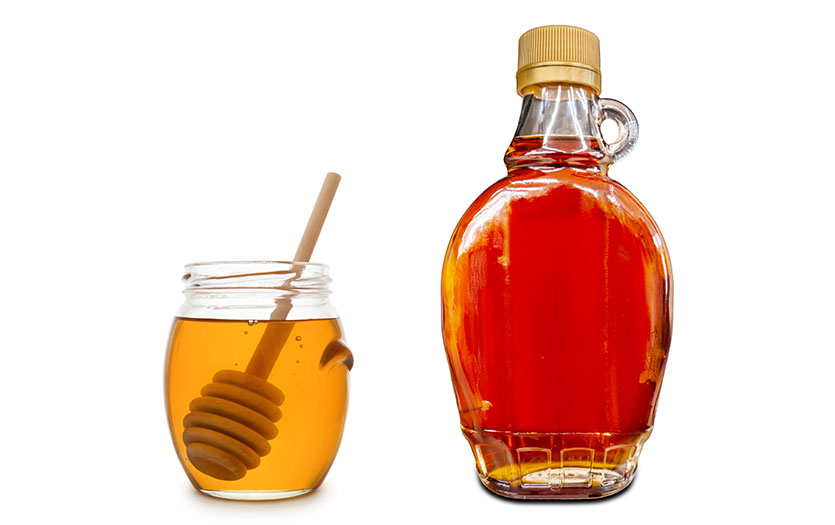
This post was written based on a presentation by Rachel Stohlman, RDN, LD, community outreach dietitian, Parkview Health.
Not only are cherries a sweet summer treat (and an outstanding sundae topper, of course), they also offer great health benefits! These round, red beauties can be a helpful part of your diet when consumed in season. Let’s take a closer look at the pros of fruits and vegetables and, specifically, the winning characteristics of cherries.
Why fruits and vegetables matter in our diets
When picking out foods in the grocery store, it’s important to stock up on items from the produce section. Fruits and vegetables are what’s known as nutrient-dense foods. This means they provide maximum nutrients for our bodies in every bite, especially when compared to processed foods which are calorie dense.
A diet rich in fruits and vegetables can have a positive effect on our health. The pros of eating produce include:
- Lowering blood pressure and reducing the risk of heart disease and stroke.
- Possibly preventing some types of cancer.
- Providing nutrients to help our immune systems function at their best.
- Having a positive effect on blood sugar and aiding with weight management (nutrient vs. calorie).
Are you eating enough produce?
Studies have shown that 9 out of 10 Americans are not getting the recommended servings of fruit and vegetables per day. The recommendations are:
- Adults: 2 cups of fruit and 3 cups of veggies per day
- Children: 1 – 1 ½ cups fruit and 1 – 2 ½ cups veggies per day
The charm of cherries
Cherries are a drupe fruit (also called a stone fruit), which means they have a thin skin, fleshy body and their seeds are hard stones. Other drupes include peaches, apricots, nectarines and plums.
While there are thousands of varieties of cherries, they all fall into two broad categories: 1) sweet cherries (most commonly the Bing variety), and 2) tart cherries (usually the Montmorency variety).
Cherries are harvested in the summer from June to July, so that’s when they’ll be at their best in stores. When shopping for cherries, look for large, firm, bright, shiny cherries with green stems. Sweet cherries are darker red or yellow and are larger than sour cherries.
How to store cherries for freshness
Cherries can be stored for 3-5 days in the refrigerator and should be kept in a shallow container to avoid bruising. For longer term storage, both tart and sweet cherries can be frozen.
How to prepare cherries
Cherries can be enjoyed raw, on their own, or you can juice or cook with them. Typically, tart cherries are used for juicing. To cook them, cherries are usually baked or sauteed. Remember to always remove the pits and stems before cooking with cherries.
Nutritional benefits of cherries
Cherries are low in calories and packed with vitamins, minerals and antioxidants. Specifically, they contain:
- Fiber – Helps with gut health and healthy weight management. Fiber helps us feel full longer, minimizes spikes in blood sugar by slowing the digestion of carbohydrates, keeps us regular, helps lower bad cholesterol, and lowers the risk of colon cancer.
- Vitamin C – Vital for immune function
- Vitamin K – Vital for blood clotting. However, some people need to be mindful of their vitamin K consumption.
- Anthocyanins – This nutrient gives cherries their deep red color and has been shown to be beneficial in heart health.
Benefits of tart cherry juice
You might have heard anecdotally about the health benefits of tart cherry juice. Studies have shown that tart cherry juice can help:
- Lower serum cholesterol levels
- Lower blood pressure
- Regulate sleep (tart cherries contain melatonin, a natural hormone that helps regulates sleep)
- Possibly soothe the symptoms of arthritis and gout
More medicine
Visit the Parkview Dashboard to learn about the benefits of carrots and radishes. For more ideas on how to cook with cherries or other ways to add more fruits and vegetables to your diet, browse our Pinterest for inspiration.



